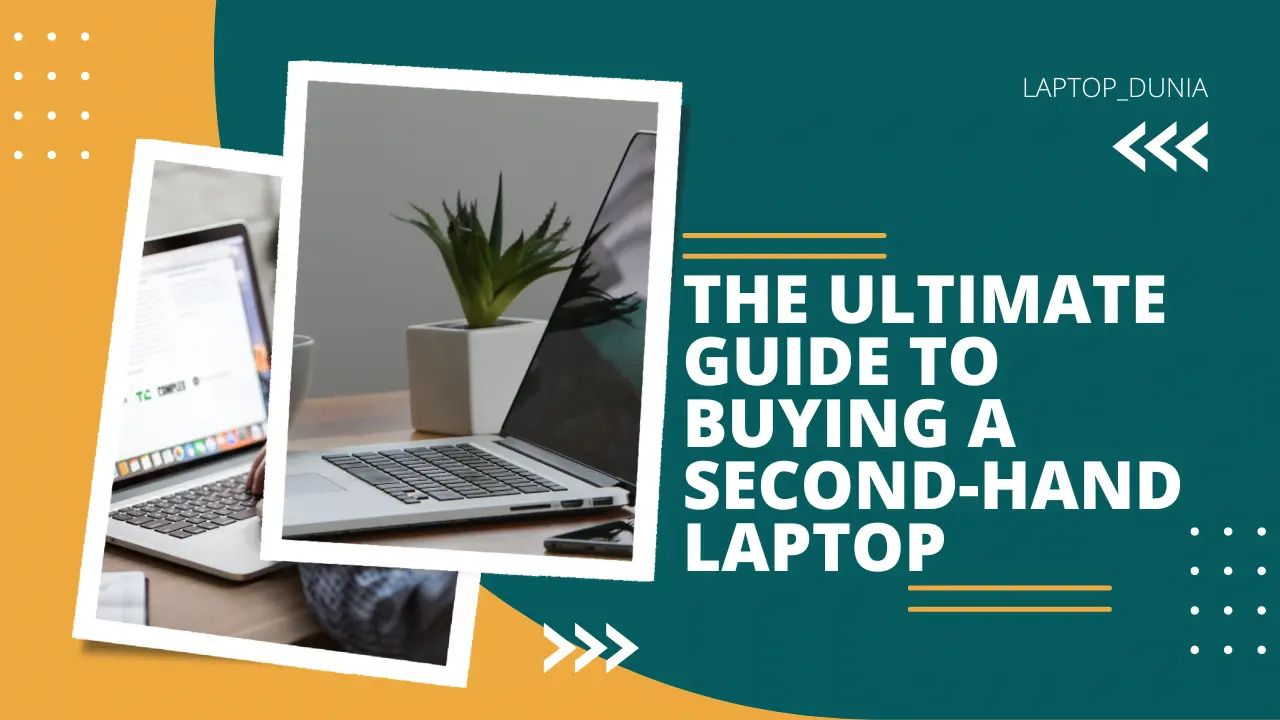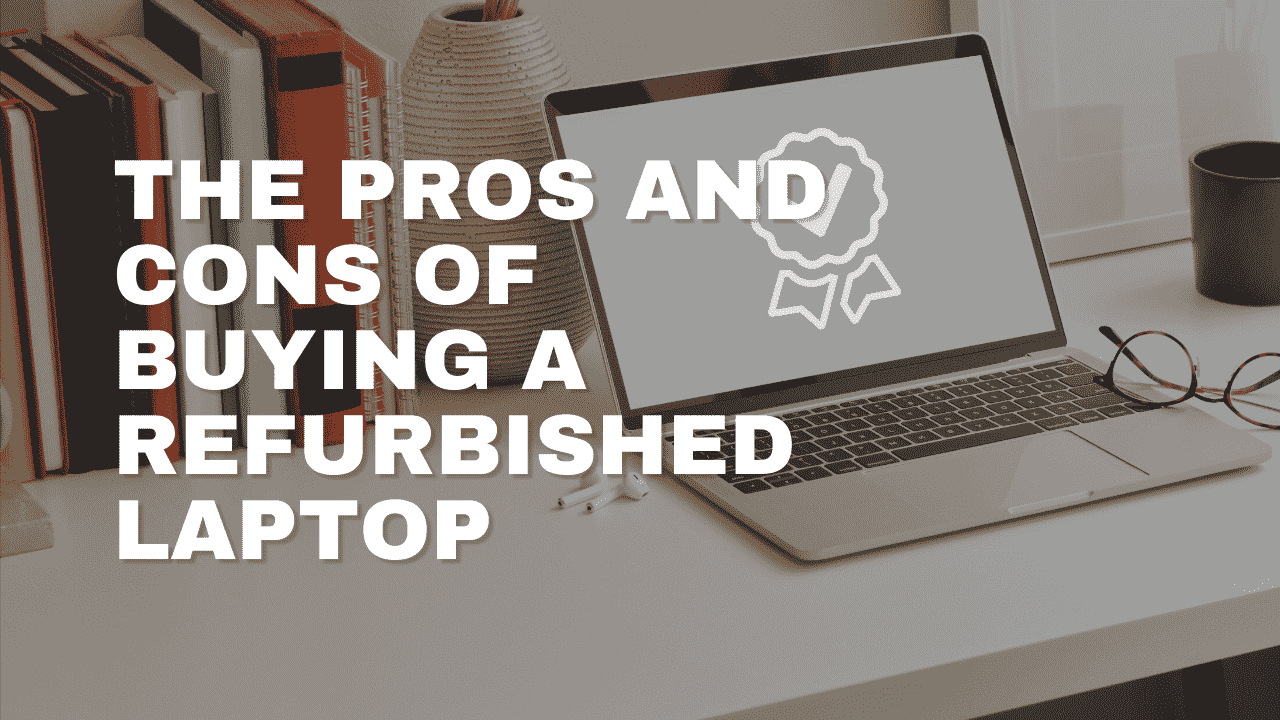The Ultimate Guide to Buying a Second-Hand Laptop
The Ultimate Guide to Buying a Second-Hand Laptop
Looking to upgrade your laptop without breaking the bank? Buying a second-hand laptop can be a smart and cost-effective solution. However, the process can be overwhelming if you don’t know where to start or what to look for. That’s where our ultimate guide comes in. We’ll take you on a journey to unlock hidden gems in the world of second-hand laptops. From understanding the benefits of buying used to finding reliable sources, evaluating the condition, and ensuring compatibility, we’ve got you covered. Discover insider tips and tricks that will help you make informed decisions and avoid common pitfalls. Whether you’re a student on a tight budget, a professional in need of an extra device, or simply looking to explore new possibilities, this guide will empower you to make the best choice. Get ready to embark on a budget-friendly laptop adventure and unlock the potential of second-hand treasures.
Advantages of buying a second-hand laptop
When it comes to buying a laptop, new isn’t always better. There are several advantages to purchasing a second-hand laptop that can make it a more attractive option. Firstly, the most obvious advantage is the price. Second-hand laptops are significantly cheaper than their brand-new counterparts, allowing you to save a substantial amount of money. This is especially beneficial if you’re on a tight budget or looking for a temporary solution. Secondly, buying used laptops is also environmentally friendly. By opting for a second-hand laptop, you’re reducing electronic waste and contributing to a more sustainable future. Lastly, buying a second-hand laptop gives you access to a wider range of models and brands that may no longer be available in the market. This opens up opportunities to discover hidden gems that can meet your specific needs and preferences.
Factors to consider before purchasing a second-hand laptop
Before diving into the world of second-hand laptops, there are a few important factors to consider.
Firstly, you need to determine your budget. Knowing how much you’re willing to spend will help you narrow down your options and focus on laptops within your price range.
Additionally, consider the purpose of your laptop. Are you using it for basic tasks like browsing the internet and word processing, or do you require more power for tasks like video editing or gaming? This will determine the specifications and performance you should look for.
Furthermore, think about the desired lifespan of the laptop. If you’re looking for a long-term investment, you may want to prioritize laptops that are newer and have a longer warranty. On the other hand, if you’re only looking for a temporary solution, older models may suffice. Lastly, consider the compatibility of the laptop with your existing software and hardware. Ensure that the operating system and ports are compatible with your needs.
Researching the different laptop brands and models
Once you’ve determined your budget and requirements, it’s time to research the different laptop brands and models available in the second-hand market. Start by identifying the reputable brands known for their reliability and durability. This will ensure that you’re investing in a laptop that will stand the test of time. Look for customer reviews and ratings to get an idea of the overall satisfaction with a particular brand or model. Additionally, consider the reputation of the brand for providing good customer support and after-sales service. This can be crucial in case you encounter any issues with your second-hand laptop. Furthermore, research the specific models within your budget that meet your requirements. Compare their specifications, performance, and user reviews to find the perfect fit for your needs.
Evaluating the condition
When buying a second-hand laptop, it’s essential to thoroughly evaluate its condition to ensure you’re getting a reliable device. Start by checking the exterior for any physical damages like scratches, dents, or cracks. While these may not affect the performance, it’s important to be aware of the laptop’s overall condition.
Next, inspect the keyboard, trackpad, and other peripherals to ensure they are functioning properly. Test the display for dead pixels, color accuracy, and brightness levels.
Additionally, check the hinges to ensure they are sturdy and hold the screen in place. Open the laptop and examine the internal components like the motherboard, RAM, and hard drive. Look for any signs of damage or excessive wear.
Lastly, inspect the battery’s health and check if it holds a charge for a reasonable amount of time. These evaluations will give you a clear picture of the laptop’s condition and help you make an informed decision.
Where to buy ?
Now that you know what to look for in a second-hand laptop, the next step is finding reliable sources to make your purchase. There are several options available, each with its own advantages and considerations. One option is to buy from an online marketplace like Laptop Dunia. They offer a wide range of laptops at different price points, giving you the opportunity to find a good deal. Another option is to purchase from certified refurbished sellers or authorized resellers. These sellers often provide warranties and guarantees, giving you peace of mind when making your purchase. Additionally, consider local computer stores or pawn shops that specialize in second-hand electronics. They may have a selection of laptops available for you to choose from. Whichever option you choose, make sure to research the seller and read customer reviews to ensure a smooth transaction.
Negotiating the price of a second-hand laptop
When buying a second-hand laptop, don’t be afraid to negotiate the price. Sellers are often willing to negotiate, especially if the laptop has been listed for a while or if there are minor issues with the device. Start by researching the average price for similar laptops in the market to have a baseline for negotiation. Point out any flaws or imperfections you’ve noticed during the evaluation process and use them as leverage to lower the price.
Additionally, if you’re buying from online marketplaces, check if the seller is open to offers or willing to negotiate the price. Be polite and respectful during the negotiation process, and be prepared to walk away if the price doesn’t meet your expectations. Remember, the goal is to get the best value for your money while ensuring you’re purchasing a reliable laptop.
Checking the specifications and performance of a second-hand laptop
Before finalizing your purchase, it’s crucial to check the specifications and performance of the second-hand laptop. Start by verifying the processor, RAM, and storage capacity. These specifications determine the speed and multitasking capabilities of the laptop. Ensure that they meet your requirements for the tasks you’ll be performing.
Additionally, check the graphics card if you plan on using the laptop for gaming or graphic-intensive applications. Next, test the performance of the laptop by running benchmark tests and stress tests. This will give you an idea of how well the laptop handles various tasks and if it meets your performance expectations. Lastly, check the connectivity options like USB ports, HDMI, and audio jacks to ensure compatibility with your peripherals. By thoroughly checking the specifications and performance, you can avoid any surprises and make an informed decision.
Testing the functionality of a second-hand laptop
Apart from the specifications and performance, it’s essential to test the functionality of the second-hand laptop. Start by connecting to the internet and browsing various websites to ensure the Wi-Fi or Ethernet connectivity is working properly. Test the audio by playing music or videos and ensure the speakers produce clear and loud sound. Additionally, check the webcam and microphone if you plan on using them for video conferencing or content creation. Test all the USB ports and other peripherals you plan on using to ensure they are recognized and functional. Lastly, run a virus scan to ensure the laptop is free from any malware or viruses. Testing the functionality will give you peace of mind knowing that all the essential features are working as expected.
Protecting yourself when buying a second-hand laptop
When purchasing a second-hand laptop, it’s important to protect yourself from potential scams or fraudulent sellers. Start by meeting the seller in person if possible, especially if buying from local sources. This allows you to inspect the laptop thoroughly and ensure it matches the description provided by the seller.
If meeting in person is not possible, request detailed pictures and videos of the laptop to verify its condition. Additionally, use secure payment methods that offer buyer protection, such as Gpay, PhonePay, PayPal, etc. These methods allow you to dispute the transaction if the laptop doesn’t meet your expectations or if you encounter any issues with the seller. Lastly, always trust your instincts. If a deal seems too good to be true or if the seller is pressuring you to make a quick decision, it’s best to walk away and find a more reputable seller.
Conclusion: Making an informed decision when buying a second-hand laptop
Buying a second-hand laptop can be a great way to save money and discover hidden gems in the world of technology. By understanding the advantages of buying used, considering important factors, researching brands and models, evaluating the condition, and testing the laptop’s functionality, you can make an informed decision and find the perfect second-hand laptop for your needs. Remember to protect yourself when making the purchase and negotiate the price to get the best value for your money. With this ultimate guide, you’re now equipped with the knowledge and confidence to embark on a budget-friendly laptop adventure and unlock the potential of second-hand treasures. Happy laptop hunting!
If you are looking for Budget Laptop, Read more:
Where to buy Second-Hand Laptop under 10000rs
Where to Buy Second-Hand Laptops Under 15000rs





